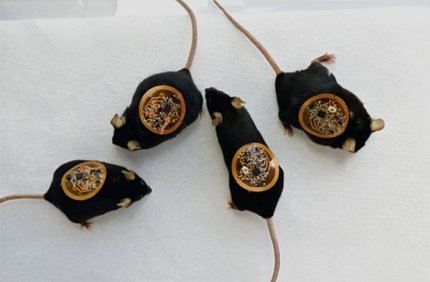Wireless Smart Bandage Improves Wound Healing in Mice

Photo: JIANG ET. AL. NATURE BIOTECHNOLOGY
After injury, the skin has the amazing ability to regenerate. But wounds can get infected and some diseases impair its ability to heal. Nonhealing wounds can lead to pain, loss of function and more serious complications.
An NIH-funded team at Stanford designed a smart bandage to actively assist the healing process. The research was published recently in Nature Biotechnology.
The smart bandage consists of a thin, flexible printed circuit. A small, coiled antenna draws power wirelessly from a nearby source allowing the bandage to provide electrical stimulation to injured tissue. Such stimulation has been shown to boost wound healing.
The wireless power also allows the bandage to measure temperature and monitor the skin underneath for signs of healing or infection.
To attach the bandage, the researchers developed an adhesive gel that loosens when heated above body temperature. This allows it to be removed without causing damage to vulnerable skin.
Healthy mice wearing the bandage moved normally, and the bandage was able to capture information about their skin during movement. No skin irritation was observed over a period of about two weeks.
Skin wounds on mice wearing the smart bandage healed about 25% more quickly than those covered with a standard sterile dressing, and the new skin showed an increase in new blood vessels. Similar results were seen in mouse models of burn healing and diabetic wounds.
Before the proof-of-concept bandage can be tested in people, it must be enlarged to a human-sized version and tested further.—adapted from NIH Research Matters
